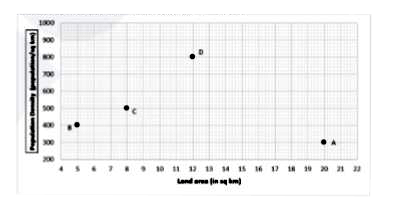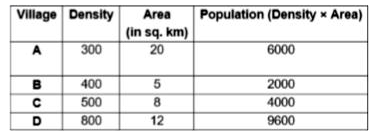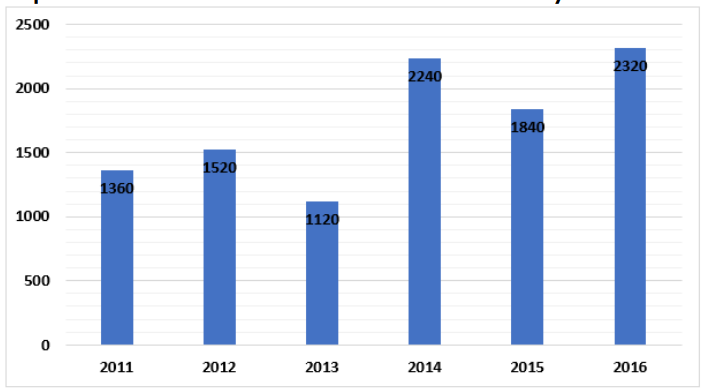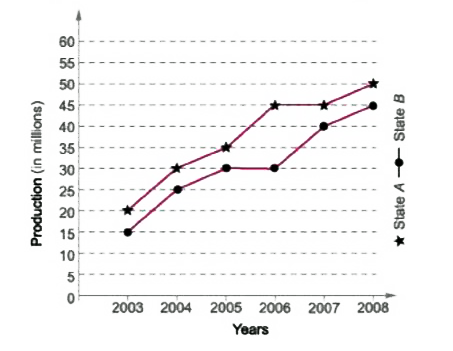Study the following information carefully and answer the given questions:
In the diagram, Population Density (in population per square kilometer) and Land Area (in square kilometer) of 4 villages A, B, C and D for the year 2001 is given.
Population Density of a village = Total population of the village / Area (in square km) of the land of the village Gender Ratio of a village = (Total number of males in a village/Total number of females in a village) × 100

Gender ratio of village C is 125 less than that of A . If female population of villages A and C are equal, then find the male population in village A
1600
2400
4400
2500
The correct Answer is:C

Let the female population in village A and C be F
Population of male in village A = (6000 – F)
According to the question:
(4000−F)F×100+125=(6000−F)F×100 On On solving above equation, we get F = 1600
Hence, male population in village A = 6000 – 1600 = 4400
Similar Questions
Study the following information carefully and answer the given questions: The following bar graph shows the price per square feet of lands in different years

Find the average price per square feet of land in all the given years except 2015?
View SolutionMimicry | Populations and Populations Density
View Solution
Knowledge Check
Population density is the population per unit ……….
AareaBland areaCwater areaDdesert area96% of the population of a village is 23040. The total population of the village is…
A32256B24000C24936D25640Study the following graph carefully and answer the questions that

Population of State A in 2005 was what percent of its total population for all the years together ?A17833B16533%C16637 %DNone of these
96% population of a village is 7680.Find the total population of the village.
View SolutionThe population of a village increases at a rate of 5% every year. If the present population of the village is 5620, find the population after 1 year.
View SolutionThe number of males in a village is 60%. If the number of women in that village If it is 440, then what is the population of that village (Population)?
View SolutionThe population of a village increases at a rate of 5% every year. If the present population of the village is 5620, find the population after 1 year.
View SolutionThe population of a village increases at a rate of 5% every year. If the present population of the village is 5620, find the population after 1 year.
View Solution
